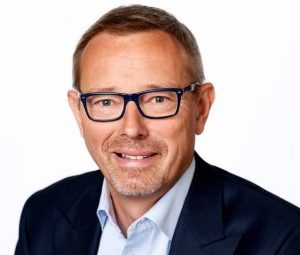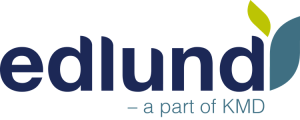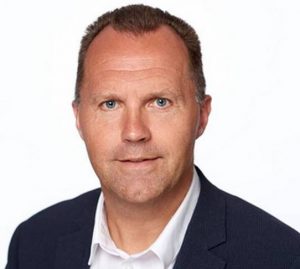Edlund A/S – IT-systems for a very exclusive market
This case story from the insurance industry is included in my upcoming book Going Global on a Shoestring. It represents a scenario where crossing a national border requires substantial investments in localisation and illustrates that shoestrings come in various sizes. This one is fairly long.
The customer problem

You do not find life insurance and pension companies (commercial or public) on every street corner. Each country in the world has a limited number of them, they are each quite big, and they are heavily regulated. As insurance primarily is information management, the industry was among the first to introduce computer systems, and over the years, most of them have developed and continue to maintain their homegrown proprietary IT-systems.
Like all other businesses, life insurance and pension companies need to reduce their expenses. If they don’t do so, then their customers will suffer in terms of deteriorating insurance coverage and pension payments. Being heavily regulated and overseen by the financial authorities changing the customer pay-outs may not even be an option, which only applies additional pressure on the need for cutting cost.

The primary source for cost reductions in this industry is the optimisation of business processes, including the automation of payments and the introduction of consumer self-service platforms. Making improvements requires the supporting IT-system to be changed, too.
If you agree that business process optimisation and cost reductions are the top agenda items for the life insurance and pension industry, then you must also conclude that the consequence is a need for replacing the proprietary IT-systems. Preferably with standard systems that are easier and less expensive to implement, change and maintain. The industry doesn’t consider their internal IT-system a competitive differentiator, and therefore a market for software companies offering standard solutions has slowly evolved.
The liptech industry
Life insurance and pension schemes are the kings of the insurance industry in terms of complexity and regulation. Here you do not find the agile and fast-moving startups. We could assign this section of the industry its own name “liptech” because it is in a league of its own. There are primarily two types of players in liptech:
- Established software companies that look to expand their footprint beyond the borders of their country of origin.
- IT-Consulting companies that specialise in bespoke development and in implementing the standard software from the first category.
It seems like each country in the world has its national infrastructure of liptech companies. Smaller countries may have none, and the larger have more. North America has the most.
With a broad base of companies still relying on proprietary systems, we may have arrived at a pivotal point where demand for more standardised systems provides an opportunity for liptech companies with international appetite and ambitions. However, where the science behind life insurance and pension schemes is universal, the legislative and regulation framework in which it gets implemented in each country differs substantially.

The main reason that the liptech industry is very national is that the market is also very domestic. There are only a few life-insurance and hardly any pension-scheme companies operating across national borders. As is the case in other industries where companies serve international markets, there are practically no options available for growing a global business by following the customers.
Liptech companies with international ambitions are therefore facing substantial investments in preparing their platforms for more languages and country-specific requirements first. They then have to decide how much localisation is required for the first customers to come on-board. The price for entering a new country may well run up into USD 20-30 million. Taking liptech companies global requires bottomless pockets and visionary customers.
Internationalisation
As mentioned, there is no global market for life insurance and pension products. Each country has its national players, and national traditions, legislation and regulation profoundly impact the liptech industry. All life insurance and pension companies around the world will, at some point, replace their current proprietary systems with standard platforms, but how soon it will happen is very hard to predict.

“The core IT-systems are the spine of every life insurance and pension company,” says Morten Steiner, CIO with PFA Pension in Denmark. “Leaving a proprietary platform and placing your destiny in the hands of an external software company is no trivial feat. Especially not if you are to be the first customer to do so.”
The primary challenge for the software companies considering entering this market is the massive investments that need to be done upfront.
“Hardly any life insurance and pension company is prepared to engage in the development of a core IT-platform from scratch today,” explains Morten Steiner. “The risk is too high. We expect our software vendors to show their commitment and present an operational solution that meets at least the most fundamental requirements.”
Edlund

The Danish life insurance and pension companies, of which there are 14, started the process of replacing their in-house developed proprietary IT-systems in the 1990s and Edlund was one of the companies that saw the market opportunity. Today, Edlund, a company with a staff of 275 FTEs and annual revenue (2018/19) of almost DKK 300 million (USD 50 million/EUR 40 million), is the undisputed national liptech market leader serving 10 of the 14 operators and providing the IT-solutions for managing over sixty percent of all pension payments in Denmark.
The company was acquired by KMD (owned by NEC) in August 2016 but continues operating independently under the Edlund brand. KMD, that is one of the largest IT-service providers in Denmark, acquired the company as a part of its strategy for international growth.
After the acquisition by KMD, Edlund started to analyse the opportunities for international expansion. They engaged one of the big management consulting companies in the spring of 2017 to help with market analysis and recommendations leading to a decision to invest in a redesign of the software and to look at opportunities in the adjacent markets.
Redesigning the software

“In the past, we were an IT-consulting company developing software,” says Gert Bendsen, CEO of Edlund. “This we are changing. In the future, there will be a much larger standard core shared by all customers and the customisation effort will decline correspondingly. The bottom line is a much more attractive value proposition for our customers. They will get more and pay less.”
With a more comprehensive standard core, Edlund can reduce the initial implementation price as well as the ongoing maintenance cost for their customers.
“The life insurance and pension industry face substantial and steadily changing regulation, “Gert Bendsen stresses. “Sharing the corresponding cost of updating the software will mean significant savings for each customer.”
While the changes in regulation are country-specific, other trends have an impact across national borders. The progress in operational best practices and the opportunities offered by new technology are universal. Thus, there is an opportunity for developing an IT-platform that can serve customers in many countries while still complying with local legislation.
“The only way life insurance and pension companies can benefit from the advances in IT-technology without having to face steadily increasing costs are by using more standard components,” Gert Bendsen emphasises. “Edlund is committed to playing the role of the IT-technology partner, providing both the standard software for the core business operation as well as the IT-consulting required for the individual implementation and ongoing support.”
The transformation from an IT-consulting company to a software company means that the revenue split between licenses and professional service will change from a 10:90 ratio to about 60:40. Edlund is currently at 50:50 but believes there is room for further standardisation.
“Operational software for life insurance and pension companies will never be plug and play,” says Gert Bendsen, “However, getting to a situation where software accounts for 60 per cent of the solution price and only 40 per cent coming from professional services should be achievable. This mix represents a desirable value proposition for our customers.”
Norway

The Norwegian market consists of six potential customers that each has a homegrown proprietary system. There is no direct national competitor, but a handful of consulting and software engineering companies serve the industry.
When it comes to life insurance and pension schemes, Norway and Denmark turned out to be the neighbouring countries that have most in common. Edlund’s market analysis concluded that the six customers would benefit substantially from moving to their new standard platform, but it was hard to assess when they would be ready to start the process. One of the Norwegian pension companies had already engaged a foreign supplier, but three years into the project they pulled the emergency brake and stopped the project.
The incident illustrates how difficult it is for an external supplier to comprehend and implement the local market requirements, and it has made the entire industry even more cautious.
Edlund is not the only liptech company that have cast their eyes on Norway. Swedish Itello AB recently acquired Eikos AS, a Norwegian actuarial consulting firm providing systems and services to pension funds and suppliers within the financial industry in Norway and abroad.
There is a very high probability that the first liptech company to win a project and demonstrate successful implementation will also be the preferred choice for the remaining companies. Only this way can they share the ongoing burden of legal compliance. Such a “winner takes all” scenario makes Edlund cautious.
“Norway should be an excellent match for us,” says Gert Bendsen, “and we are in very close contact with the market. However, we need to get the timing right. A solution for the Norwegian market must be based on our new platform. Adding specific Norwegian features will require tangible signs of a commitment from at least one of the customers. We do not ask the first customer to take the full investment, but without a live project, the risk for us would be hard to justify.”







